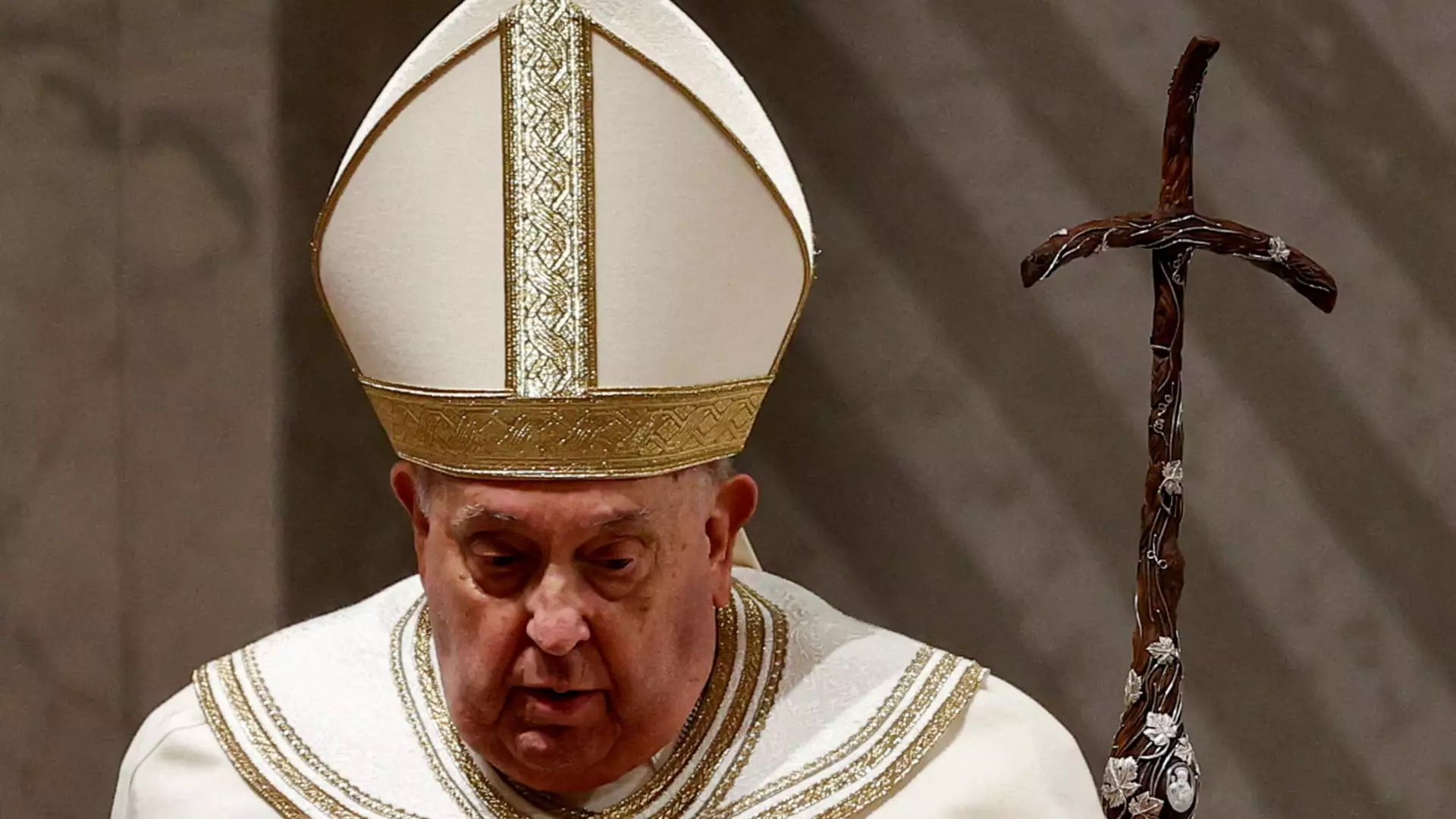As news circulates regarding Pope Francis’s health, it becomes increasingly evident that the 88-year-old leader of the Catholic Church is grappling with serious medical issues. Admitted to Rome’s Gemelli hospital on February 14, he was diagnosed with double pneumonia, a condition that has placed his health in a precarious situation. The Vatican has reported a fluctuating state of well-being, indicating both critical assessments and moments of tranquility. After a night described as “tranquil,” there is a cautious sense of optimism; however, the challenges he faces cannot be understated.
Double pneumonia, the condition afflicting Pope Francis, is characterized by inflammation and infection in both lungs, leading to significant breathing difficulties. The situation is further complicated as the Vatican has labeled the infection as “complex,” suggesting the involvement of multiple microorganisms. This nuanced classification implies not only a serious health crisis but a multifaceted battle that medical professionals must navigate. Given the pope’s historical vulnerabilities, including previous lung issues stemming from pleurisy and the partial removal of one lung, the risks associated with this infection are amplified.
Age is an undeniable factor in Pope Francis’s current predicament. Medical experts highlight that his advanced age, combined with prior health complications, puts him at an elevated risk for severe outcomes. Dr. Sergio Alfieri, one of the pope’s attending physicians, emphasized the critical nature of his condition—specifically, the potential for the infection to spread to his bloodstream, leading to sepsis, a severe and often deadly response to infection. The juxtaposition of the pope’s status as a global spiritual leader against the vulnerabilities of human health presents a sobering reminder of mortality.
The medical treatments administered to Pope Francis are telling of the serious nature of his health crisis. Reports indicate he has required supplemental oxygen, high-flow oxygen therapy, and blood transfusions due to a low platelet count—an indication of possible anemia. Each of these interventions underscores the gravity of his condition, painting a picture of a man in need of extensive medical support. The Vatican’s updates, while filled with descriptions of his nights of rest, simultaneously reveal the multidimensional struggle against maladies that permeate his physical being.
A Reflection on Vulnerability and Resilience
Pope Francis’s ongoing battle with pneumonia not only highlights the fragility of health but also opens discussions about resilience in leadership. As a figure that represents hope and guidance for millions, the pope’s personal health struggles resonate deeply, evoking empathy and concern from faithful individuals worldwide. His experience invites conversations about aging, health care, and the often-unseen challenges faced by leaders who bear the weight of their responsibilities amid personal trials.
While the Vatican’s updates may offer glimmers of hope, the reality remains that Pope Francis is in a critical position. The intersection of advanced age, a history of lung issues, and the complexities of double pneumonia create a scenario filled with precariousness and uncertainty. As his recovery unfolds, it serves as a profound reminder of the human condition—resilient yet vulnerable, and constantly navigating the fragile line between health and illness.


Leave a Reply